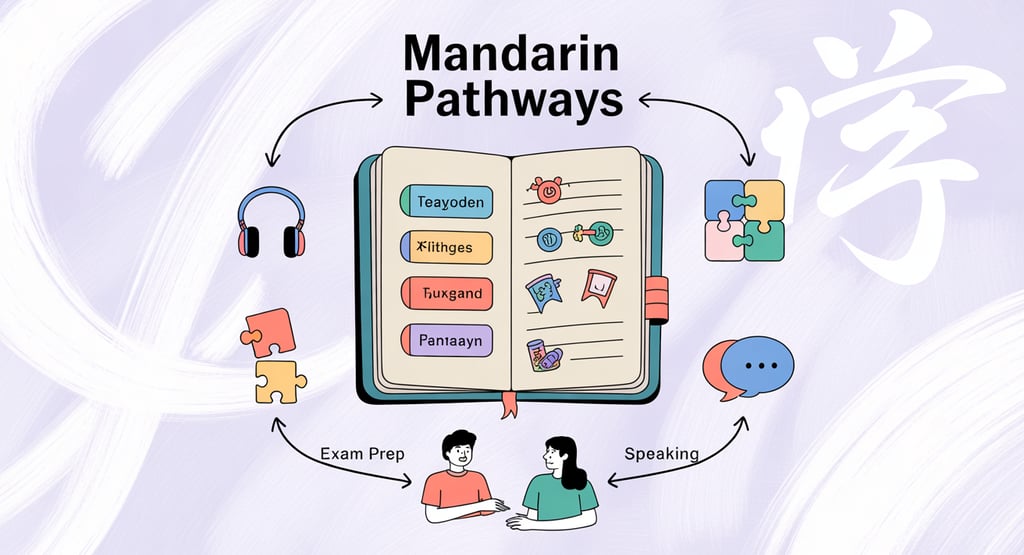SEN Specialists : Special Needs Tutors | GCSE - IGCSE Tuition |
Bespoke Teaching: No Two Learners Are the Same
Discover how bespoke Mandarin tutoring tailors lessons to each learner’s style, goals, and exam needs for IGCSE & GCSE success.
James


Ni hao! 👋 I’m Ren Dee, your bilingual Mandarin and English tutor. In this blog series, we’ve explored methodology, exam skills, study strategies, and coaching. For this final main post, I want to discuss the cornerstone of my tutoring philosophy: bespoke teaching.
Every student is unique. They have different strengths, weaknesses, learning styles, and goals. That’s why a “one-size-fits-all” approach doesn’t work in Mandarin — especially not for IGCSE and GCSE exams. My job is to design a tailored roadmap that gets the best out of each individual student.
Why Bespoke Teaching Matters?
Mandarin is a complex subject, and students arrive with different challenges:
Some are curious beginners with no background.
Some have lived in Mandarin-speaking countries and need exam polish to secure top grades.
Some struggle with tones, others with writing, others with confidence in speaking.
A personalised approach ensures that students don’t waste time on what they already know — instead, we zoom in on the areas that matter most for their success.
Adapting to Different Learning Styles
I identify how each student learns best and adapt my methods:
Visual learners – thrive on colour-coded notes, character radicals mapped with imagery, flashcards.
Auditory learners – progress faster through listening drills, shadowing exercises, and repetition games.
Logical learners – excel when we break grammar into clear formulas, rules, and patterns.
Immersive learners – prefer speaking practice and roleplays over worksheets.
Tailoring Lessons to Goals
Bespoke teaching also means focusing on different outcomes depending on the student’s objectives:
Exam High Achievers – Focus on past papers, examiner criteria, and advanced vocabulary.
Struggling Learners – Rebuild basics patiently, simplify learning, create accessible wins.
Confident Speakers – Strengthen writing and grammar to balance oral skills.
Fast Learners – Acceleration programmes with idioms, essay fluency, and culture.
Case Study Snapshots
A shy Year 10 student terrified of speaking: through gentle immersion and structured sentence-building, she grew into a confident oral exam candidate, scoring a Grade 8.
A student returning from Taiwan: fluent in speech but weak in writing characters. Focused solely on writing structures and past papers to achieve Grade 9.
A busy IGCSE student juggling 10 subjects: used micro-learning and exam coaching to manage Mandarin efficiently without burnout.
Beyond the Student: Parent Involvement
For younger learners, parent involvement is often key. I provide:
Clear feedback after lessons.
Guidance on at-home resources and practice.
Progress updates linked to syllabus expectations.
Final Thoughts
No two learners are the same — and that’s why no two lesson plans should be identical. By tailoring Mandarin tuition to fit personality, learning style, and goals, I help every student not only achieve in exams but also enjoy the process of learning one of the world’s most fascinating languages.
This post concludes the main blog series — but stay tuned for my wrap-up piece where I’ll provide a full summary and call to action for learners preparing for their Mandarin exams.
📩 Ready for a learning journey designed just for you? Get in touch, and let’s create a personalised roadmap for Mandarin success.
About
Tailored educational support for unique learning needs in Singapore, UK, Malaysia, Philippines, Indonesia, Thailand, Laos, Cambodia & China.
EDUCATION FOR HEALTH UK (EFH) 2025. Copyright . All rights reserved.
Pages
Support Pages
What Next After GCSE and A Level or IB ?
